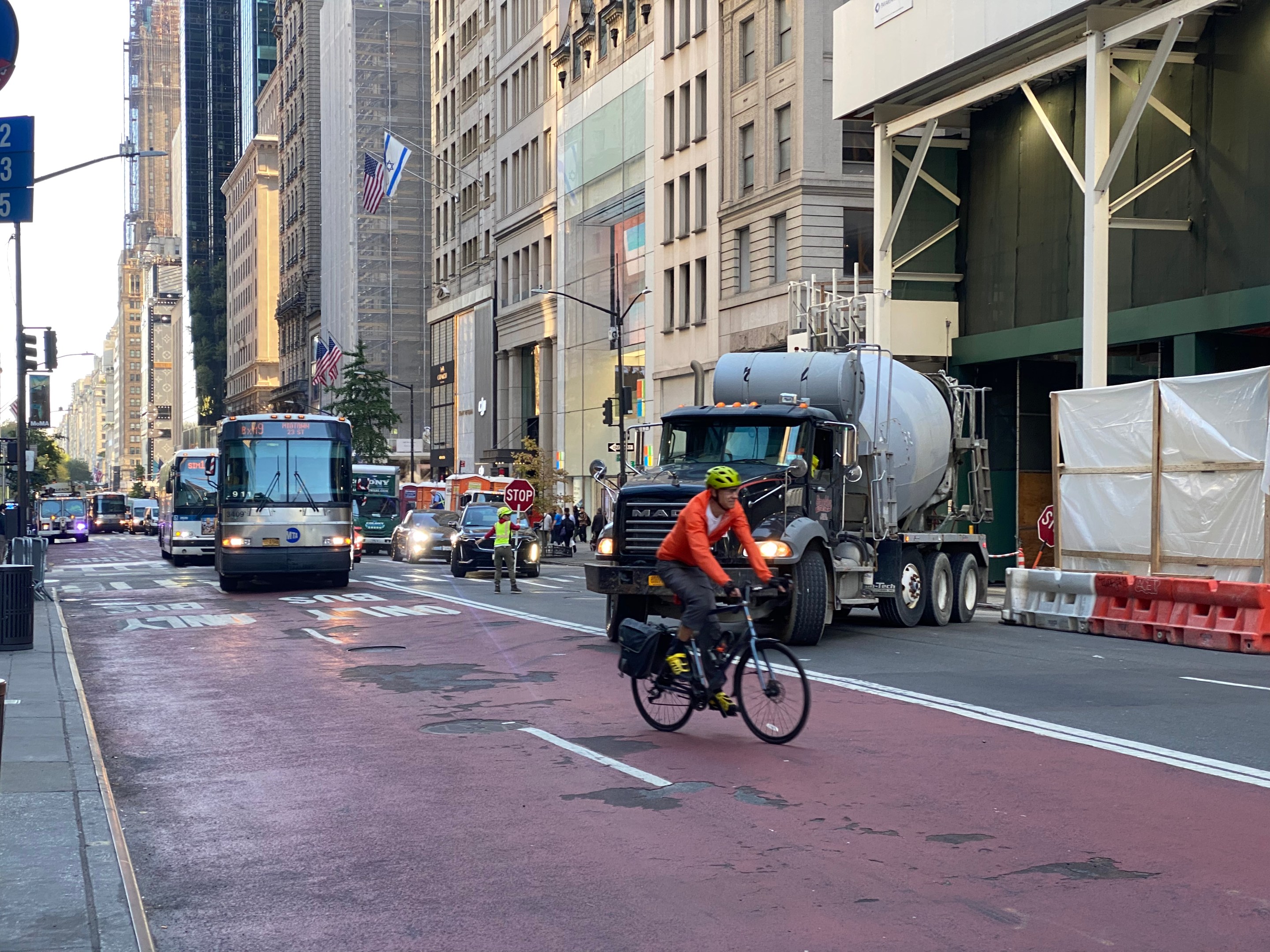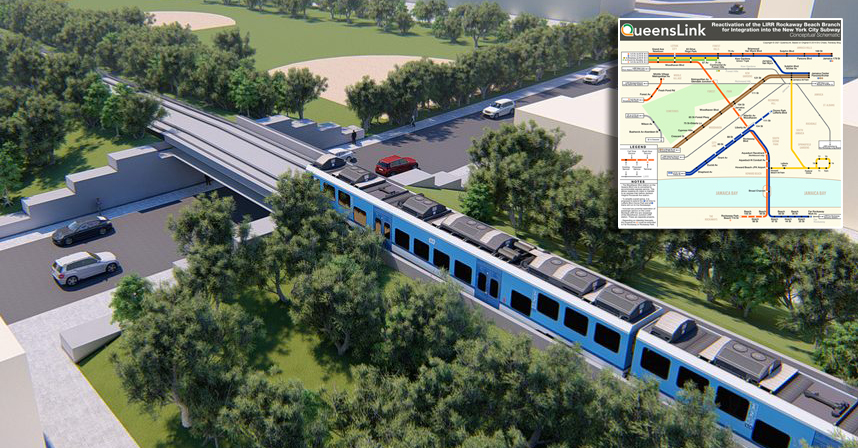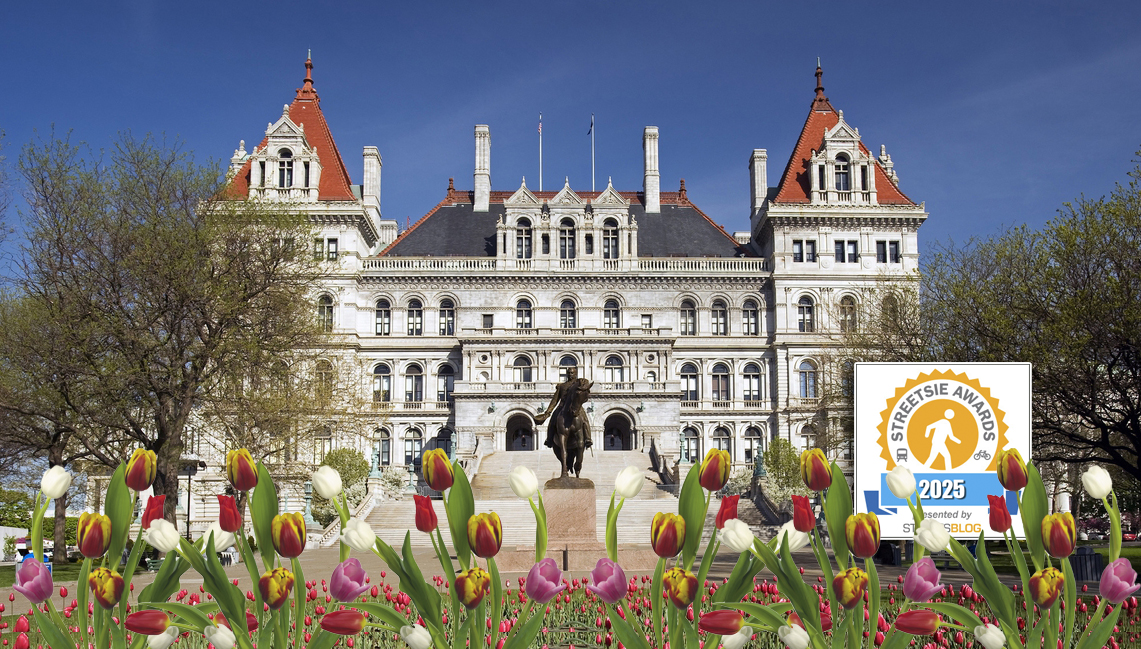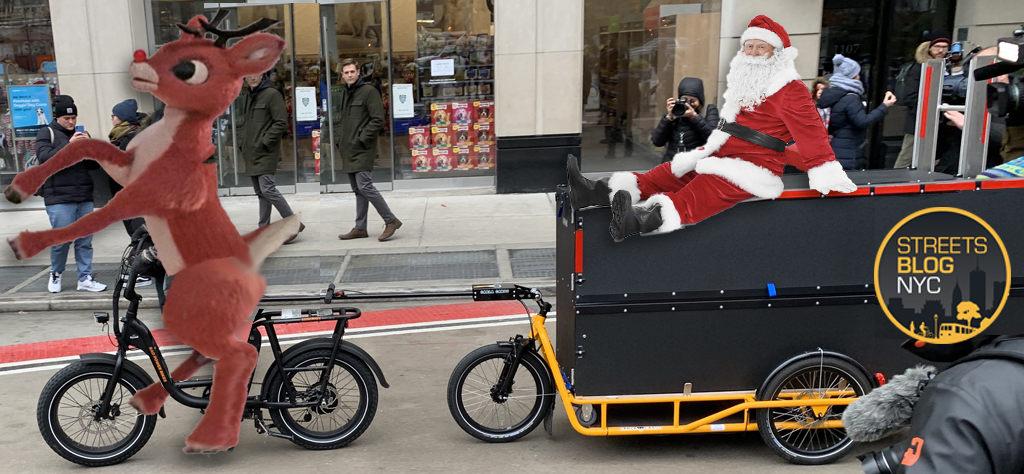Mayor Adams's scaled down redesign of Fifth Avenue — which cut a bus lane and bike lane out of an earlier plan put forward under the de Blasio administration — isn't a "real solution" to safety issues on busy retail corridor, the local community board charged last week.
Manhattan Community Board 5 on Thursday voted in favor of a resolution calling on Mayor Adams to implement his predecessor's 2021 proposal for Fifth Avenue, which would have turned the strip into a busway with wider sidewalks and a protected bike lane. The board's resolution — which passed unanimously — urged Adams to implement the 2021 proposal immediately, rather than in 2028 as currently scheduled.
"A real solution to the bike / pedestrian safety issue on 5th Avenue must be proposed in the final design to ensure that cyclists and pedestrians will not have conflict, including the consideration of a marked shared path on the sidewalk or a fully protected bike-lane on the Avenue," the resolution said, "even if removing an additional travel lane is required to make that feasible."
Fifth Avenue today has two bus lanes, three lanes for private vehicles, 23 feet for pedestrians and no dedicated space for cyclists. The 2021 plan would have kept the two bus lanes while repurposing two vehicle lanes for more space for people on foot and bike.
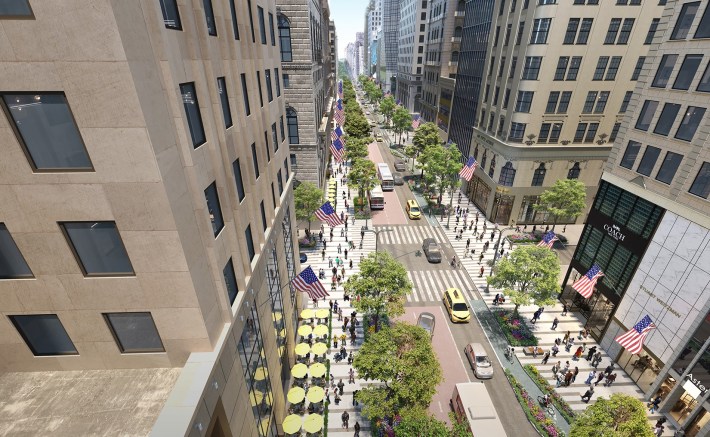
Mayor Adams instead announced his own, watered down version of the plan last October, which eliminated the proposed bike lane and one of the bus lanes in favor of a second lane for private autos and even wider sidewalks. Adams also punted the actual implementation of the plan to the next administration (barring his reelection), just like de Blasio did.
“We want a real solution to the bike and pedestrian safety issue,” explained CB 5 Vice Chair Samir Lavingia, who spoke to Streetsblog in his personal capacity.
“We need to do something to alleviate congestion problems on the sidewalk, we need to do something to make it so the buses run faster, and we need to do something to make sure bicyclists feel safer," Lavingia said.
Fifth Avenue is among the busiest pedestrian corridors in the city, with over 5,400 walkers per hour at peak times and over 23,000 per hour on holiday weekends. Board members agreed that expanding the sidewalk should alleviate crowding, but also expressed concern that without proper bike lanes, cyclists will ride on the sidewalk and endanger pedestrians and themselves.
“I think we all know [cyclists] are going to be there anyway, whether you accommodate them or not,” CB 5 Transportation Committee Chair David Sigman said at the June 23 meeting where DOT presented Adams's scaled-back design.
MTA officials previously told Streetsblog the move to scrap one of the street's two bus lanes would slow bus service for the 110,000 daily commuters on what is the busiest bus corridor in Manhattan.
Passenger vehicles make up only 5 percent of people using the strip, according to the city's Economic Development Corporation — yet cars have two lanes there under the plan hatched by retail interests and the Adams administration.
Adams's proposal for the corridor was drawn up in coordination with the powerful Fifth Avenue Association business group. The association's CEO, Madelyn Wils, insisted to board members at the June 23 committee meeting that her group "tried" to fit a bike lane but "just couldn't make it work" — even as they found a way to remove a bus lane in favor of a second car lane.
“There’s just not enough room on every street for everything," said Wils. “It’s not like we didn’t try, we tried, we just couldn’t make it work.”

For members of the board, four years (and counting) of inaction through two and potentially three different mayors shows a lack of will to stand up to retail interests and do the right thing.
"The current administration would rather measure ten times and cut once,” said Lavingia. "There are plans and proposals that have been on the shelf for years, and would take between one and two months to implement. I think there’s just an appetite for quicker changes."
